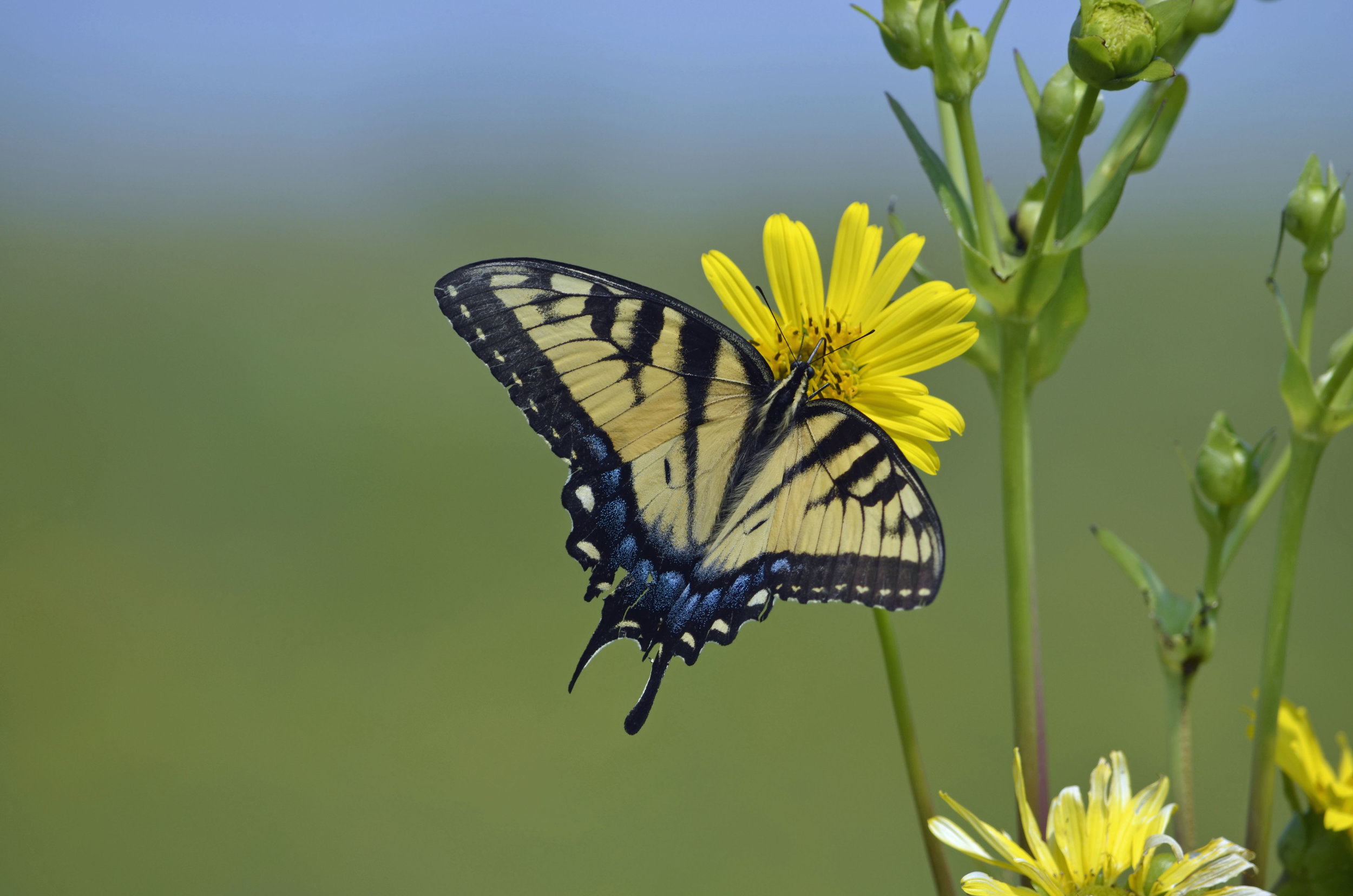A question mark butterfly obscured by the cup plant it nectars on is one of the hundreds of butterflies counted at Goose Pond Sanctuary this July. Photo by Maddie Dumas
Friday, July 28th was a sunny day to tour the beautiful prairies at Goose Pond Sanctuary. We took the opportunity to grab the butterfly nets and take an inventory of the butterflies using our prairies for food, shelter, and egg laying. Over the course of the day, we counted a record number of 3,144 wings -- butterflies have two pairs of membranous wings (forewing and hindwing) on each side -- or 786 butterflies.
Goose Pond volunteer and Madison Audubon board member Topf Wells with butterfly guide in hand checking out a sighting. Photo by Arlene Koziol
For the past three years, Goose Pond staff and volunteers participated in the Mud Lake North American Butterfly Count held at the beginning of July. This year we decided to conduct a separate count later in the month to see if we found different species or a change in numbers.
Fifteen counters divided into four parties lead by Mark, Maddie, Jim Otto, and Greg Tiedt. Overall we found 19 species. Check the spreadsheet below for count data.
Eastern tiger swallowtails were new to the count along with Jim Otto’s find of a giant swallowtail, a more southern species that sometimes strays north into Wisconsin in late summer. In the past four years we have found 24 species of butterflies on the counts.
An eastern tiger swallowtail on cup plant. Photo by Mark Martin
The count date can account for a difference in species found and the insect numbers. We found that in the past some species were more numerous in early July counts including the skippers, and sulphurs. However, we found many more viceroys, common buckeyes, pearl crescents, and painted ladies in our late July count.
A monarch finds energy and nourishment from the nectar of a meadow blazing star. Photo by Maddie Dumas
The highlight was finding 344 monarchs compared to 23 found last year on July 2nd. Maddie and her team counted 131 monarchs, many of them nectaring on meadow blazing stars that were just beginning to flower. Meadow blazing stars may be at the tail end of flowering when monarch tagging begins so we will have to concentrate on searching the showy goldenrod flowers.
Monarch tagging is a great citizen science activity for the whole family. Accessible, mown trails wind through some of the best nectaring habitat on the sanctuary, so people of all ages and abilities are welcome. Our 1,500 monarch tags arrived last week and if you would like to come out and tag in September you can sign up at Madison Audubon website.
Thanks to the summer interns and volunteers for helping out on a day of counting our winged friends. It was a great learning experience for everyone. If you would be interested in helping count butterflies next July contact us at goosep@madisonaudubon.org.
A butterfly in-hand is worth two on the flower -- look at the beautiful coloring of this pearl crescent butterfly! Photo by Maddie Dumas
Written by Mark Martin and Susan Foote-Martin, Goose Pond Sanctuary resident co-managers, and Maddie Dumas, Goose Pond Sanctuary land steward








